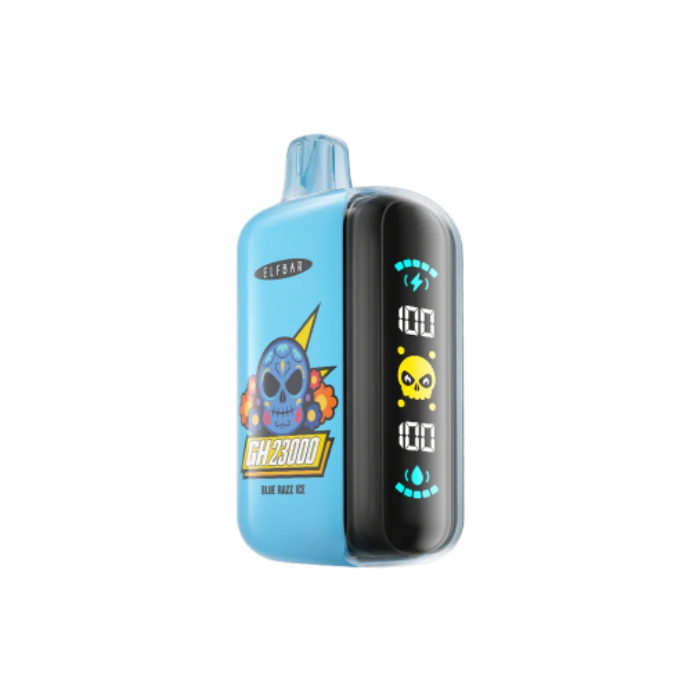Guides, Nicotine Pouches
What Is the Half Life of Nicotine Pouches?
If you’ve been depending on nicotine pouches for your daily nicotine intake, then you already know how wonderful these products are. They mostly don’t contain any tobacco leaves, making them less harmful than cigarettes. These tobacco-free nicotine pouches are likewise spit- and smoke-free, allowing users to use them discreetly and without creating any mess.
One thing about nicotine pouches, however, that you must know about is the half life of their nicotine content. The half life of nicotine content in oral nicotine pouches pertains to the time it requires for one’s body to eliminate half of the said addictive substance from a dose.
In this informative blog from NativeSmokes4Less, we’ll explore the half life of nicotine pouches and the primary factors affecting this aspect of the said nicotine products.
What Exactly is the Half Life of Nicotine Pouches?
Prior to knowing the exact half life of nicotine pouches, you must first know nicotine pharmacokinetics, or how their nicotine content enters and works inside your body.
You see, whenever you place a nicotine pouch between your upper lip and the gum, your mucous membranes absorb its nicotine content. This highly addictive chemical then passes through your bloodstream and reacts with the nicotinic acetylcholine receptors found in your brain. Once this interaction happens, various neurochemicals are released. Some of them include dopamine and adrenaline. You can feel this through a tingling sensation, which represents the nicotine buzz.
The nicotine levels in your body reach peak levels once you use the nicotine pouch. Since most pouches today last for around 30 minutes, your body’s nicotine levels may increase until you reach the 20 to 25-minute mark.
Similar to other chemicals that enter your body, the liver will be the one that will metabolize nicotine with the help of enzymes CYP2A6, FMO, and UGT. The said organ breaks down nicotine into cotinine and other minor alkaloids like nicotyrine, nornicotyrine, and metanicotine.
Based on research published in the NCBI, various byproducts of nicotine products can be prevalent in different parts of your body. Nicotine and cotininie, for instance, are known to be available in your blood, urine, saliva, and hair. Alternatively, NNAL and NNAL-glucuronides can only be found in blood and urine. Lastly, anatabine can only be spotted in your urine.
You may be wondering how long nicotine and other byproducts of nicotine products stay in your body. Generally, they tend to last for hours and even days in your body.
Nicotine, for one, tends to stay in your body for 1 to 3 days. Cotinine and anatabine, alternatively, could last for 3 to 10 days. Ultimately, NNAL and NNAL-glucuronides are known to stay in your body for multiple months.
How about the half life of these byproducts?
Nicotine has a half life of 1 to 2 hours, while anatabine boasts 10 to 16 hours of half life. Cotinine then has a half life of 16 to 18 hours, while NNAL and NNAL-glucuronides have a half life of 6 weeks.
So, whenever you consume a nicotine pouch, its nicotine enters your body. After removing the pouch from your mouth, its nicotine residues halve after 2 hours. After 4 hours, only 1/4th of the original concentration of nicotine stays in your body. This keeps happening until all nicotine in your body becomes untraceable.
Keep in mind that this is only a general timeline. Therefore, it might not apply to every nicotine pouch out there since different brands have come up with their own take on the said products. It may likewise differ from one nicotine user to another.
Some nicotine pouches can stay effective for as long as an hour, while others stick to the standard 30-minute usage. Aside from their usage duration, pouches today are packed with various types of nicotine, which can also affect their nicotine concentration and half life.
Nicotine Concentration and Half-Life
When dealing with nicotine, a lot of tobacco product users would first try various nicotine replacement therapy products like nicotine gums, nicotine lozenges, and nicotine patches. Since they are approved by health authorities, doctors would often recommend these NRT products to help alleviate nicotine addiction, minimize tobacco intake, and start their smoking cessation journey.
Based on the article Nicotine Chemistry, Metabolism, Kinetics and Biomarkers published in NCBI, the nicotine absorption from NRT products tends to be slower than other nicotine and tobacco products. The same products tend to gradually increase nicotine in your blood as opposed to cigarette smoking, which is known for letting nicotine be absorbed by the body very quickly. This makes tobacco cigarettes somehow more addictive than NRT products.
How about nicotine pouches?
The nicotine delivery of these oral tobacco-free nicotine pouches is known to be gradual, which can be somehow similar to NRT products. This is probably the reason why some people consider nicotine pouches as their replacement for cigarettes, snus, and other traditional tobacco products.
Once you place one pouch in your mouth, you’ll be gradually exposed to nicotine. It will then take effect after a couple of minutes, giving you a tingling sensation that signifies a nicotine hit.
But, does the entire nicotine content of pouches go into your body?
The article “Beyond Smoking: Risk assessment of nicotine in pouches” revealed that not all nicotine in pouches is absorbed into the body.
Regardless of the nicotine concentration in a nicotine pouch, the study found that the body may only absorb between 50% and 60% of the total nicotine after using the pouch for an hour. Even if individuals use the pouches for just 20 minutes, they may still absorb 24% to 52% of the total nicotine from the same products.
This is also the case with cigarettes.
If an individual smokes a typical cigarette that contains around 11.9 to 14.5 mg of nicotine, they may only absorb around 1 to 1.5 mg of nicotine. The only difference between nicotine pouches and cigarettes is that the latter can be smoked differently to let cigarette smokers manipulate the dose of nicotine and nicotine brain levels by changing the puff volume, depth of inhalation, the extent of dilution with room air, and the rate and intensity of puffing.
Despite not getting all the nicotine doses from your nicotine pouch consumption, it’s important to take note that the half life of nicotine from the pouches may remain the same. Since most pouches last for 30 minutes, expect their half life to be around 2 hours.
Your body may then finally lose all its nicotine content after 1 to 3 days, depending on your age, genes, hormones, and other similar factors.
You might be wondering why it’s important to know the half life of nicotine pouches.
It’s essential to know the half-life of nicotine in nicotine pouches as it helps you manage your nicotine intake, avoid overuse, and understand withdrawal effects. It can lead to informed decisions about spacing out nicotine pouch consumption, which then helps you avoid nicotine independence and encounter side effects like nausea and dizziness.
Remember, nicotine can still be harmful to your body as it may lead to health risks when consumed in excessive amounts. Long-term nicotine exposure may lead to a wide range of cardiovascular diseases, various types of cancer, oral health issues, and many more.
Factors Affecting Half-Life
Nicotine pouches these days come in a plethora of flavours and nicotine strengths to accommodate the preferences of nicotine users like you. Light pouches may boast 3 to 6 mg nicotine per pouch, while strong ones may exceed 8 mg. These nicotine-containing products are available at NativeSmokes4Less, a reputable online store that sells them at very reasonable prices.
With all the things discussed about the half life of nicotine pouches, you might already know by now how important it is to know this particular factor. Aside from alleviating your nicotine dependence and addiction, knowing the half life of pouches may help you prepare for important events and medical procedures where having nicotine in your body could be a big deal.
If you are a player of any sport, you might be required to take a nicotine or cotinine test before a huge game. Without knowing the half life of nicotine, you might end up getting fined or suspended, which can ruin your reputation. The same thing could happen if you are taking an annual medical examination at work. Failure to know the half life of the same substance may also lead to penalties, suspension, or even termination, depending on the nature of your work.
Medical surgeries could also be hindered once doctors find out about your elevated nicotine levels. Hence, it’s necessary to know and understand how long nicotine stays in your urine or other body parts.
The real question with nicotine, however, is how long it takes for the substance to leave your system. We all know by now that traces of nicotine in your body may leave after 1 to 3 days.
If you just recently used nicotine pouches, your plasma nicotine concentrations will most likely become higher. From there, expect nicotine in your bloodstream to stay there for around 3 days and be detected using tests that check not only this substance but also cotinine. Similarly, nicotine can stay for 3 days in your saliva. In your urine, however, nicotine may be traced more easily since it is known to stay for up to 20 days. So, if you want to keep your record clean, you must consume nicotine accordingly.
Now, the speed of nicotine leaving your body is directly influenced by its half life, which is then driven by numerous factors. Some factors that affect the half life of nicotine are as follows:
- Age: Younger nicotine users have a faster metabolism, which means they can clear out and expel nicotine faster than older adults.
- Metabolism rate: Some people, regardless of age, may boast faster metabolism than others due to genetics or high activity levels. Hence, they can easily break down nicotine more quickly, shortening the half life of the substance.
- Genes: A number of studies suggest that Caucasian and Hispanic people metabolize nicotine more quickly than Asians and African Americans.
- Hormones: Women, especially those who are pregnant or taking birth control, are known to flush out nicotine more quickly than men.
- Health conditions and medication: Certain health conditions like liver disease, as well as medications like antidepressants, can alter nicotine metabolism, either prolonging or shortening the half life of nicotine from nicotine pouches.
- Frequency and dosage: If you are consuming nicotine pouches regularly, your blood nicotine levels may become high. This only leads to slower clearance of nicotine since your body has to process it, which could require a longer time.
- Smoking history: If you just recently quit smoking but have been smoking cigarettes for a long time, you may have already developed a tolerance towards nicotine. This means that the more nicotine pouches you consume, the longer it will take for the nicotine to leave your body.
- Liver function: Your liver metabolizes nicotine before it is released and excreted through urine. Now, the rate at which your liver breaks down the substance may differ for every person. Some may be able to metabolize it more quickly than others due to the variations in enzyme efficiency.
- Hydration levels: Drinking more water may be able to help your kidneys flush out nicotine faster. If you are dehydrated, it will take a longer time for the nicotine to be eliminated from your body.
Nicotine coming from pouches can travel quickly through your oral mucosa. And while you’ll be somehow safe from smoking-related diseases, you are still putting yourself at risk of diseases when you expose yourself to huge amounts of nicotine.
Hence, the next time you consume nicotine pouches and place one in your mouth, you must make sure to know how they could affect your body and the duration on which nicotine leaves your body. You can start by knowing the half life of nicotine in nicotine pouches and determining which of the said factors could influence how long nicotine stays in your body.
Frequently Asked Questions
What is the half life of nicotine pouches?
The half-life of nicotine from pouches ranges around 1 to 2 hours. This indicates that half of the nicotine is flushed out from the body within this duration. Various factors like metabolism, hydration, and enzyme activity can affect the rate at which nicotine is processed. Despite its relatively short half-life, the effects of nicotine can persist for longer periods, depending on the dosage and individual tolerance.
How long is the half-life of nicotine?
Nicotine’s half-life, regardless of whether it’s from smoking cigarettes, vaping e-cigarettes, or using nicotine pouches, is approximately 1 to 2 hours. After this duration, only half of the nicotine remains in the body, with complete elimination taking several more hours or even days.
How long is the effect of nicotine pouches?
The effect of nicotine pouches typically lasts between 30 minutes and an hour, depending on nicotine strength, absorption rate, and individual tolerance. Normally, their stimulating effects wear off after this period, but nicotine stays in the bloodstream for several hours before being metabolized fully.
Summary
The half life of nicotine in nicotine pouches ranges around 1 to 3 days, which could be affected by several factors like age, hormones, genes, metabolism rate, smoking history, and many more. Knowing the half life of the said substance helps you manage your nicotine consumption, prevent nicotine overdose, and monitor your overall nicotine intake.
Want to know how nicotine pouches are made? Then click over here to learn more about them.






















